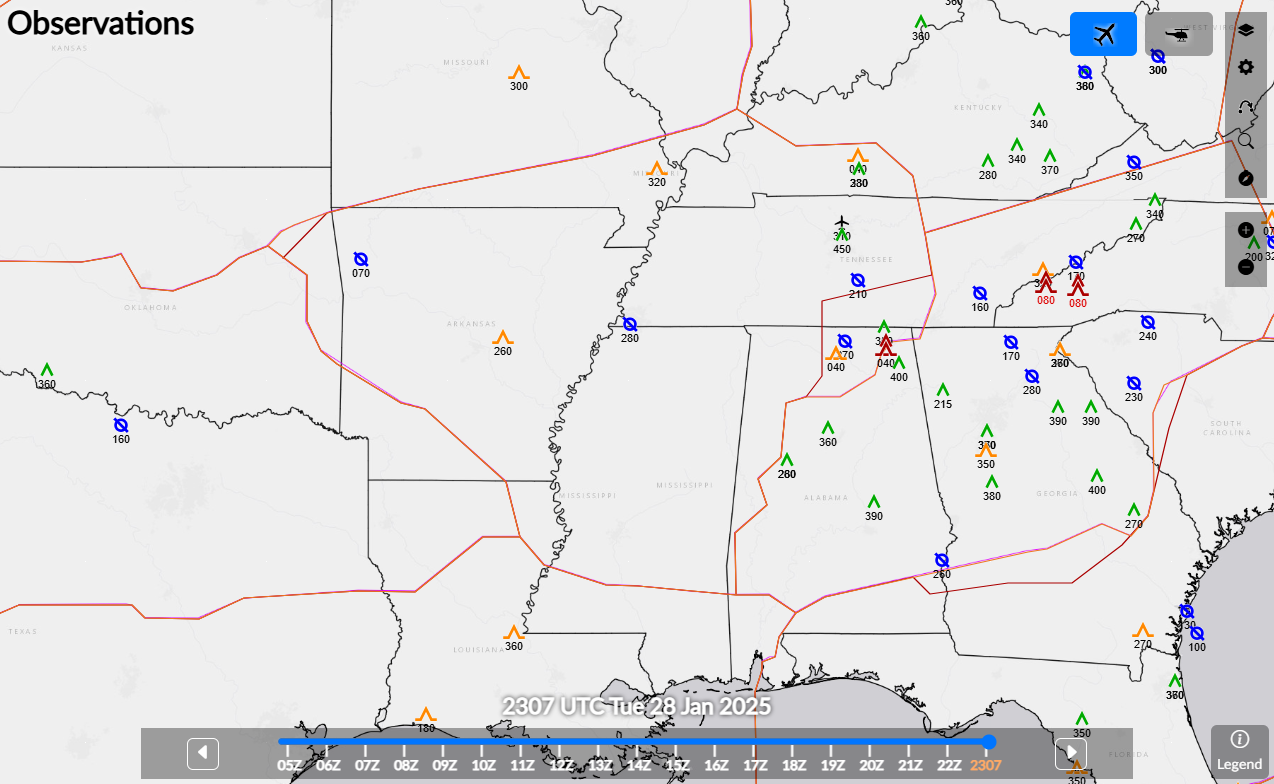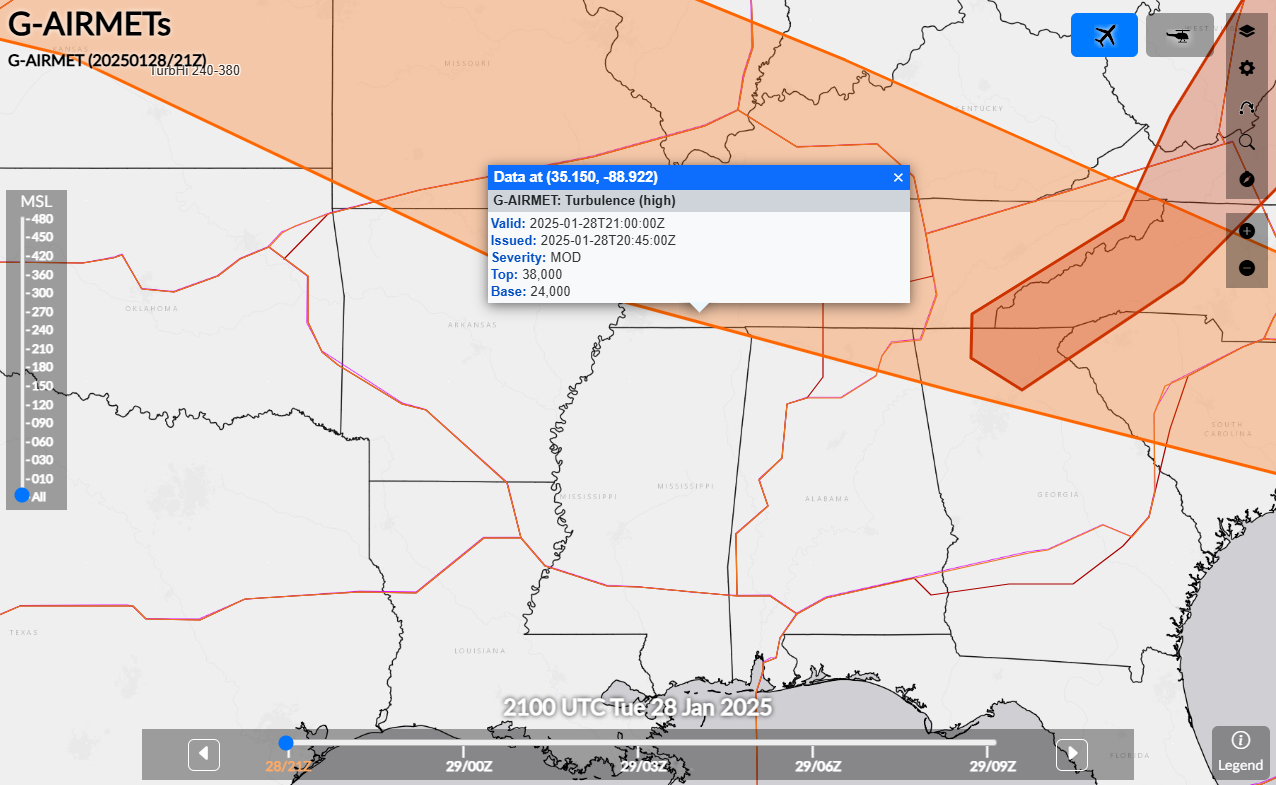
A frigid cold airmass will bring significantly colder weather across the eastern two thirds of the country early this week. Record low temperatures are expected in the Southeast by Tuesday morning. Moderate to heavy lake effect snow will continue downwind of the Great Lakes through Monday. Several inches of snow accumulation is expected, including in portions of the Chicago Metro Read More >
Memphis
Center Weather Service Unit
| Return to Safety Homepage |
Turbulence
Turbulence is defined as "Irregular motion of an aircraft in flight, especially when characterized by rapid up-and-down motion, caused by a rapid variation of atmospheric wind velocities". This section will cover clear-air turbulence. For information on turbulence caused by convection, visit our section on thunderstorms.
There are many causes of turbulence. The most common causes are Convective Currents, Obstructions to Wind Flow, and Wind Shear.
 |
Convective Currents (commonly known as thermals) are caused by uneven surface heating during the daytime. These currents cause pockets of air to rise and affect aircraft at low altitudes. These are most common during the spring and summer months. |
 |
Turbulent eddy motions near the ground can be caused by obstructions, such as trees, buildings, mountains, etc. It is directly related to the wind speed and the roughness of the obstructions. It is often called "mechanical turbulence". |
 |
Wind shear generates turbulence between two wind currents with different velocities and/or directions. It is commonly found in the vicinity of a jet stream, but can occur at any altitude. |
|
Turbulence Intensity There are varying intensities of turbulence. When turbulence occurs, it should be reported as Light, Moderate, Severe, or Extreme.
|
To avoid areas of turbulence, look at the forecasted and reported ride conditions on the route of flight before departure. While in flight, listen for hazardous weather messages and other pilot reports of turbulence. AIRMETs are issued for areas of moderate or greater turbulence, while SIGMETs are issued for areas of Severe to Extreme turbulence.
For a current display of PIREPs, click here.
For a current display of AIRMETs in effect, click here.
Turbulence |
Thunderstorms |
Icing |
Ceiling and Visibility |
LLWS |
Density Altitude |
US Dept of Commerce
National Oceanic and Atmospheric Administration
National Weather Service
Memphis
3229 Democrat Road
Memphis, TN 38118
Comments? Questions? Please Contact Us.




